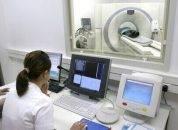iFR has been validated as a useful tool for intermediate lesion analysis, with the advantage of not requiring the use of drugs. On the other hand, its use for PCI outcome assessment has not yet been thoroughly looked into, even though there have been promising data. 24% of DEFINE PCI cases presented ≤0.89 iFR with…
Is Coronary Lithotripsy as Effective as Rotational Atherectomy?
Severely calcified lesions currently pose a significant challenge, as they require adequate preparation through non-compliant balloons or cutting balloons to achieve effective stent expansion. Another option is the use of orbital or rotational atherectomy (RA), but this carries the risk of complications such as slow/no reflow, perforations, dissections, peri-procedural infarction, or guidewire rupture. Despite the…
AHA 2023 | ORBITA-2: PCI vs. Placebo in Stable Angina for Symptom Reduction
In patients with stable chronic angina, percutaneous coronary intervention (PCI) is often conducted to relieve symptoms. However, there is still some uncertainty regarding whether PCI provides superior symptomatic relief compared with a placebo in patients not receiving anti-anginal medication. Researchers conducted a controlled and randomized study in which patients with stable angina discontinued all anti-anginal…
Coronary Calcification: More Frequent Use of Coronary Lithotripsy as a Recommendation
Coronary calcification, whether concentric or eccentric, has always posed a challenge in percutaneous coronary intervention (PCI) due to difficulties in plaque preparation, device navigability, proper stent apposition, drug release, and potential complications during the procedure. This study analyzed 262 patients who participated in the four Disrupt CAD OCT Studies and underwent PCI using coronary lithotripsy followed…
Long-Term Results from the BEST Study: Drug-Eluting Stents vs. Bypass Surgery in Diabetic Patients with Multiple Vessel Disease
The impact of diabetes on the development of cardiovascular disease is widely known, with a strong association with extensive and diffuse coronary artery disease. Decision-making regarding how to revascularize patients with multi-vessel disease is a complex process. In this context, coronary artery bypass grafting (CABG) has been recommended over percutaneous coronary intervention (PCI) based on…
TCT 2023 | ISAR-DESIRE 3: 10-Year Results
In-stent restenosis (ISR) remains the primary limitation of percutaneous treatment for coronary artery disease. The strategy to address this limitation involves the use of drug-eluting stents (DES) or drug-coated balloons (DCB), both of which have proven to be effective and safe therapeutic alternatives. Despite current recommendations, treating ISR continues to be a challenge, and clinical…
TCT 2023 | SWEDEHEART, Evolution at 5 Years
This register included 42,887 patients receiving FFR or iFR to assess moderate lesions, and 80% of them underwent FFR. Population characteristics were similar, except that the iFR group had more women, with more diabetes, MI, stroke and chronic obstructive pulmonary disease (COPD). Primary end point was a composite of all cause death, MI and unplanned…
Should We Use Ultrasound to Guide Transfemoral Access Routinely?
Currently, transfemoral access (TFA) is used in large-caliber procedures and when transradial access is not successful. The use of ultrasound (US) to guide access has emerged as a technique that allows for precise cannulation, avoiding accesses above and below the inguinal ligament. However, evidence regarding the effectiveness of this tool has shown variable results. Two…
Left Main Coronary Artery PCI: In What Scenario Could We Not Use IVUS?
Lesions in the left main coronary artery (LMCA) continue to pose a significant challenge. The use of coronary imaging before percutaneous coronary implantation (PCI) has proven useful in analyzing the lesion, identifying the presence and location of calcification, and determining lesion length in the LMCA, the left anterior descending artery, and the circumflex artery. Various…
Coronary Artery Calcium on Non–ECG-Gated Chest CTs: Mere Finding or Therapeutic Opportunity?
CAD related acute phenomena often present as a consequence of poor risk factor monitoring over time. Early detection of these patients, especially high risk patients, has significantly contributed to reducing morbimortality over time. Coronary artery calcification (CAC) is considered a measure of atherosclerosis burden in and might be present in asymptomatic individuals. Most centers do…
OCT-Guided PCTA: Does It Offer any Benefits?
For many years, percutaneous transluminal coronary angioplasty (PCTA) has expanded significantly worldwide. However, despite the demonstrated advantages of intravascular ultrasound (IVUS) in terms of minimal luminal area, reduced cardiovascular events, and restenosis, its use is not very common due to various reasons. On the other hand, optical coherence tomography (OCT) offers even higher resolution than…








